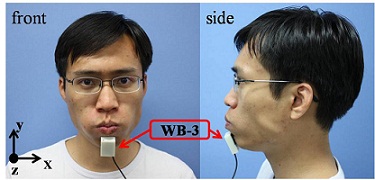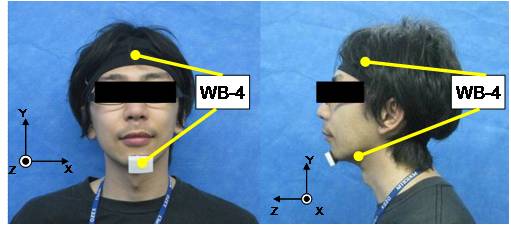Experiment 1
Background: Many types of jaw tracking devices have been developed for the analysis of functional jaw movement, but most of them are still not handy.
To improve the handiness of the jaw movement analysis devices, we propose a jaw-tracking prototype by using WB-3 IMU. The IMU was attached to mandible during normal tests without physical restriction to the subjects.
The preliminary results of jaw movement analysis during free chewing with three types of food of different shapes and hardness are evaluated. A group of 9 healthy subjects
aged from 21 to 36 years old kindly participated in the experiment. Chewing time, chewing frequency, Power Spectrum Density (PSD) of jaw's angular speed and acceleration,
mouth opening angle were evaluated.
The results clearly show that the subjects used less chewing time, chewing frequency and energy to eat soft food; higher values were found
in the case of hard food; and there was no significant difference in mouth opening angle while eating these three foods.
Objective:
Our aim, therefore, is to develop evaluation methodologies to overcome the limitations of the existing devices and improve the
handiness of tools for jaw movement analysis by using WB-3 system.



